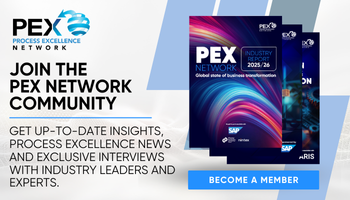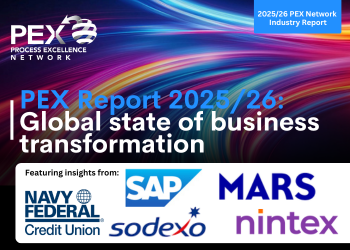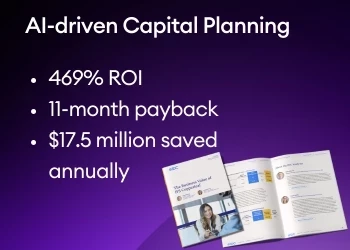Beyond the buzzwords: Leading real transformation in legacy organizations
In legacy environments, change requires more than frameworks and roadmaps. It demands cultural rewiring, courage and a steady hand
Add bookmark
Transformation. Agility. Digital-first. These terms dominate boardroom conversations and corporate strategy decks. Yet for many legacy organizations – those steeped in decades of traditional processes, layered hierarchies and risk-averse cultures – they often remain just that: buzzwords. Lofty ideals that are rarely translated into sustained, meaningful action.
The real challenge isn’t ambition – it’s the gap between intent and execution. As a transformation leader, I’ve seen that in legacy environments, change requires more than frameworks and roadmaps. It demands cultural rewiring, courage and a steady hand to bridge the past with the pace of the future.
Join the PEX Network community

Don't miss any news, updates or insider tips from PEX Network by getting them delivered to your inbox. Sign up to our newsletter and join our community of experts.
Learn More1. Respect the DNA, but don’t be bound by it
Legacy organizations hold deep expertise and institutional memory. The misstep many change leaders make is treating this history as baggage instead of raw material.
In one financial services firm, we began by mapping how frontline employees actually worked, not just what was documented. We uncovered many effective yet inconsistent processes. Instead of enforcing overnight standardization, we codified best practices into templates that improved speed and consistency while honoring existing strengths.
Takeaway: Don’t bulldoze history. Curate it. Codify what works and evolve what doesn’t.
2. Anchor change in purpose, not process
Agile ceremonies and Lean workshops may check boxes, but without a clear “why,” they rarely stick.
In one transformation effort, momentum returned only after shifting the focus from toolkits to purpose – reducing turnaround times, eliminating redundant approvals and freeing up time for higher-value work. The tools didn’t change. The intent did.
Takeaway: Change resonates when it connects to outcomes people care about, not compliance.
3. Identify the informal influencers
Legacy firms are powered by more than their org charts. It’s the tenured analysts and respected middle managers who often shape outcomes.
Change accelerated when we invited these informal leaders to co-lead efforts. By embedding champions trained in problem-solving into every team, change spread organically through peer influence – not mandates.
Takeaway: For legacy firms, movements matter more than mandates.
4. Design for dual operating systems
John Kotter’s idea of a “dual operating system” – one stream for stability, another for innovation – is especially useful here. One team reimagined a complex approval process by introducing a parallel track for low-risk cases. This allowed for innovation without sacrificing oversight.
Takeaway: Creating space for experimentation (without disrupting the core) is key to unlocking agility.
5. Build the capability, not just the project
Many transformations start strong and fade fast because they’re treated like one-off initiatives. A better approach? We ran monthly “efficiency sprints” – short cycles to test, refine and embed new workflows. This made transformation a habit, not a heroic effort.
Takeaway: Lasting change comes from building capability into the rhythm of business.
6. Measure what matters
Legacy organizations often drown in data yet starve for insights. By moving from traditional KPIs like “number of approvals” to real-time metrics like cycle times and ownership clarity, we helped teams act faster and smarter. We showed progress in ways that inspired confidence.
Takeaway: What you measure is what gets attention – and action.
7. Lead with empathy and grit
Change is personal, especially in environments where pride is tied to how things have always been done.
One of the most impactful changes involved redirecting low-value tasks – like status checks – to a self-service portal. It freed up employees for more meaningful work and improved customer experience.
This required grit, investing in tech, navigating resistance and staying the course even when adoption lagged.
Takeaway: Empathy earns trust. Grit sustains momentum.
The real work starts when the buzzwords end
Legacy organizations carry enormous potential: deep customer relationships, robust infrastructure and institutional credibility. However, staying relevant takes more than buzzwords. It requires grounded leadership, intentional design and human-centered change.
Transformation isn’t one-size-fits-all. It’s contextual, messy and always human. When leaders commit not just to what changes but how change happens – with humility, purpose and resolve – legacy becomes a launchpad, not a limitation.
PEX Report 2025/26: Global state of business transformation

The PEX Report 2025/26 examines the results of our annual survey of more than 200 professionals with insights from more than a dozen industry business and thought leaders from across the globe. Contributors include leaders from Mars, Navy Federal Credit Union, Pacific International Lines, Sodexo, SAP and Nintex!
Explore why true business transformation is not a singular project but an ongoing journey, one that requires visionary leadership, cross-functional collaboration, technological prowess and an unrelenting commitment to agility and innovation. Those that embrace this evolution holistically are not just surviving the future, they are shaping it!
Download Now












